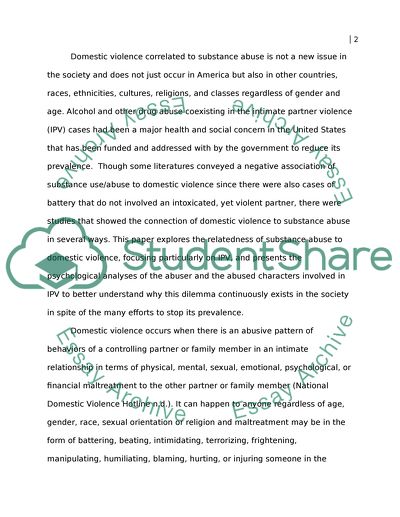Cite this document
(“Substance Abuse and Domestic Violence Essay Example | Topics and Well Written Essays - 1250 words”, n.d.)
Retrieved from https://studentshare.org/psychology/1428317-substance-abuse-and-domestic-violence
Retrieved from https://studentshare.org/psychology/1428317-substance-abuse-and-domestic-violence
(Substance Abuse and Domestic Violence Essay Example | Topics and Well Written Essays - 1250 Words)
https://studentshare.org/psychology/1428317-substance-abuse-and-domestic-violence.
https://studentshare.org/psychology/1428317-substance-abuse-and-domestic-violence.
“Substance Abuse and Domestic Violence Essay Example | Topics and Well Written Essays - 1250 Words”, n.d. https://studentshare.org/psychology/1428317-substance-abuse-and-domestic-violence.


